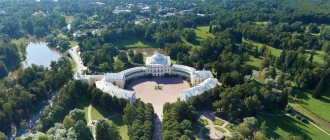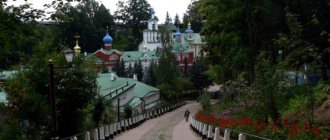A trip along the middle Volga will definitely lead to the small town of Zhigulevsk, located not far from Togliatti. Here you can make a stop to get acquainted with the history of the Russian outback, find out who barge haulers are, and feel for yourself how mysterious Russian nature is. There are quite good hotels in the city that provide traditional services to guests. If you want a secluded environment, you should book an apartment. Getting to know the sights will take one or two days. It is recommended to start with natural surroundings.
Excursion to the Zhigulevsky Nature Reserve
Visiting the protected area is possible only after obtaining a special permit or with tourist vouchers issued by the administration of the reserve.
You can apply for a pass or a group voucher in person at the checkpoint or through the reserve’s website. You can also buy vouchers from accredited guides, a list of which can be found on the official website of the Zhigulevsky Nature Reserve.
Excursion to the Shiryaevsky adits, © Victoria Sarkisova
The total time spent in the protected area should not exceed 2.5 hours. It is prohibited to leave the designated trail or route. The ban includes stopping and resting outside special places, collecting plants, starting a fire and scattering garbage. Violators of these requirements face a financial fine.
The only accessible road route in the Zhigulevsky Nature Reserve is to Strelnaya Mountain. The observation decks offer majestic views of the Volga, Zhiguli Mountains, the dam and nearby settlements. The route begins from the forestry checkpoint in the village. Zolnoye, where you need to register and buy a ticket. The cost does not depend on the number of people, but on the type of vehicle.
Ticket prices on the official website of the Zhigulevsky Nature Reserve
From the checkpoint to the parking lot it is 6 km, then a short equipped pedestrian part begins - 320 m.
Another excursion route leads to the Stone Bowl tract . An unequipped pedestrian trail begins in the village. Solnechnaya Polyana takes place in mountainous terrain, with ups and downs. The length of the trail in one direction is 2 km.
Most often, this route is chosen by those travelers who are not just looking for what to see and where to beautifully capture themselves in a photo. Along this path they purposefully go to the famous spring in order to drink water from it and touch the spiritual sacraments. Above the spring there is a stone with the inscription: “The miraculous spring of St. Nicholas.” Nearby is a small chapel in honor of St. Nicholas the Wonderworker, which adds peace to the majestic views.
The beginning of the walking trail, © Alexander Smirnov
One of the most accessible and famous man-made attractions of the reserve is the Shiryaevsky adits , carved out in the Zhiguli Mountains back in the 19th century. They are located on the left slope of the Shiryaevsky ravine and form many kilometers of labyrinths. For safety reasons, many of the former mine workings are closed to the public. It is impossible to get lost in the adits open to tourists, but you should take into account the fact that even in the summer heat it is cold inside them.
Transport and industry
The city has enterprises in the food, pharmaceutical, military, mining and electric power industries. Previously, there was also an oil-extracting industry, which was practically curtailed due to the depletion of oil reserves. In the energy sector, there is the Zhigulevskaya hydroelectric power station.
The city is crossed by the Ural federal highway. There is a city bus station - buses depart from there to Ulyanovsk, Penza, Samara, Kuznetsk, Dimitrovgrad, Syzran.
Plants
On the territory of the Zhigulevsky Nature Reserve there is a unique plant community called the rocky steppe. Outside the protected zone, they are on the verge of extinction.
Rocky steppes were formed over millions of years due to a combination of several factors: severe temperature contrasts, pronounced insolation, practically anhydrous conditions and an extremely thin soil layer (up to 5 cm). This is how unique plants, characteristic only of the Volga region, appeared - endemics.
They are adjacent to lime-loving and rocky plant species. These include relict pine forests, as well as low-growing mountain oak forests, with twisted trunks and branches.
© Lyudmila Martyshova
In general, the flora of the Zhigulevsky Reserve includes over a thousand species. Of these, 130 species are listed in the Red Book of the Samara Region and Russia, and some have special scientific significance. For example, Tsinger's astragalus, thyme and spurge Zhiguli, carnation and Volga fescue, Sprygin's bell, Tsvelev's violet, Korzhinsky's anemone and a number of other equally interesting plants that are found only in this territory.
Zhigulevskaya HPP
The Zhigulevskaya hydroelectric power station in Tolyatti is one of the largest hydroelectric power stations in Russia. The Zhigulevskaya HPP is considered the second most powerful of similar technical structures in Europe, providing, in addition to generating electricity, a protective function against floods, and is involved in large-scale shipping and water supply. The construction of a hydroelectric power station in the Samara region was first thought about at the beginning of the twentieth century, but the state budget was not prepared for such large expenses, and the project had to be postponed. In 1919, the first stage of construction of the Zhigulevskaya hydroelectric power station began - the search for a specific location for the future project began. G.M. Lenin chose several options for the location of a large hydroelectric complex, the foundation of which would take place only in 1950 with the formation of the village of Otvazhny. A decade earlier, in the workers' village of Upravlencheskiy, work began on the formation of a future hydroelectric power station, but the Great Patriotic War suspended its construction for a long time.
The Zhigulevskaya HPP is located near the city of Zhigulevsk, 75 kilometers from Samara, and is a unique technical structure with two dozen dams. The width of its dam is almost 3,000 thousand meters with a depth of 52 meters. Tens of thousands of prisoners were involved in its construction, thanks to whose efforts the largest hydraulic structure in the entire European part of the plain was erected in just seven years. During the construction of the Zhigulevskaya hydroelectric power station, there were casualties - Stavropol was flooded, the modern prototype of which is located ten kilometers from the former city and is called Togliatti.
The Zhigulevskaya HPP includes the picturesque Kuibyshev Reservoir, the volume of which is enormous - the third largest in the world in terms of territory occupied. Locals call it “the sea” because of its incredible size - about 500 kilometers long and almost 40 kilometers wide. The Zhigulevskoye Reservoir is a favorite place for active recreation or spending time surrounded by the charming nature of Tolyatti.
Excursion services to the Zhigulevskaya hydroelectric power station are suspended today, although a few months ago curious tourists could visit its territory by agreement.
History of the city of Zhigulevsk
- 1647 - the first mention of the village of Morkvashi, on the site of which the modern city is located.
- In 1840, Count Orlov-Davydov V.P. founded the village of Otvazhnoe, the territory of which today belongs to Zhigulevsk.
- In 1937, an oil well was found in the valley of the Zhiguli Mountains. For oil workers developing new wells, the working village of Zhigulevsk was built.
- 1950 - the beginning of construction of the Volzhskaya Hydroelectric Power Station named after V.I. Lenin. Thousands of specialists who came to the all-Union construction site settle in the workers' village.
- In 1952, the village was renamed the city of regional subordination Zhigulevsk.
- In 1957, the construction of the Volzhskaya hydroelectric power station was completed, which today is called Zhigulevskaya.
- In 2006, Zhigulevsk received the status of an urban district.
Main streets of Zhigulevsk
On the map of Zhigulevsk you can see the main streets with house numbers and nearby objects:
- st. Novo-Samarskaya runs through the entire city next to Mount Lipovaya Griva;
- st. Komsomolskaya crosses the street. Nikitinskaya. Nearby – Mogutovaya Mountain, the recreation park named after the 40th anniversary of the Komsomol, the Crystal stadium;
- st. Vokzalnaya is located on the outskirts of the city, not far from Samarskaya Luka. Nearby is a railway station;
- st. Tkacheva passes along the border of the Zhigulevsky cemetery.
Animals
The symbol of the Zhigulevsky Nature Reserve is the Asian badger. The cute animal not only appears on emblems, but lives in the only “Badger Town” in all of Russia. The town, or enclosure complex, is located immediately behind the administrative building in the village of Bakhilova Polyana.
All three badgers living in the town were born in captivity and are not adapted to life in the forest. The most important and oldest badger (over 10 years old) is Boris Mikhalych. He is accompanied by two “ladies” who answer to the names Masha and Dasha. You can visit the town and watch the life of badgers for free. It is worth considering that these are crepuscular animals; they most often sleep during the day. Moreover, in October-November, badgers go into hibernation and emerge from it only in March-April.
The Zhigulevsky Biosphere Reserve is distinguished by a wide variety of bats. Thus, in the adits of Mount Popova there is the largest wintering of bats in Europe (over 30 thousand). Several species of these representatives of the animal world are listed in the Red Book.
© Lyudmila Martyshova
Among the large mammals found on the territory of the reserve are wild boars, elk and roe deer. Predators are represented by foxes, pine martens, ermines and rare lynxes. Hares and various species of rodents also live here.
The list of bird species living in the reserve is constantly updated. Protected species of winged birds: peregrine falcon, buzzard, short-tailed eagle, golden eagle, saker falcon, black stork, gray crane, black-headed laughing owl, eagle owl, tawny owl, gray shrike and others. Two species under special control are the white-tailed eagle and the imperial eagle, which are listed in the Red Book of International Importance.











